![]()
The story of OCZ with SSDs is a story with all the elements of success. Ambition, conquest, risk, fall, resurrection. If it also had sex, we would be talking about Hollywood's new blockbuster. Anyway, the story is still interesting and the renewed OCZ, now flying on the wings of the powerful Toshiba, does not seem to want to change its tune.
Thus, OCZ keeps coming out with products sporting cutting edge performance in some areas, like the number of IOPS at steady state, not caring if the competition outstrips them in other areas. The enterprise oriented Vector 150 and the enthusiast Vertex 450 and Vertex 460 that OCZ has produced under the roof of Toshiba are all examples that confirm it.
OCZ now completes their SSD line with an entry level - mainstream SSD, the OCZ ARC 100. With genes from its older siblings and some concessions, the ARC 100 will try to bridge the gap between performance and price. Whether it will succeed will become apparent in the following pages.
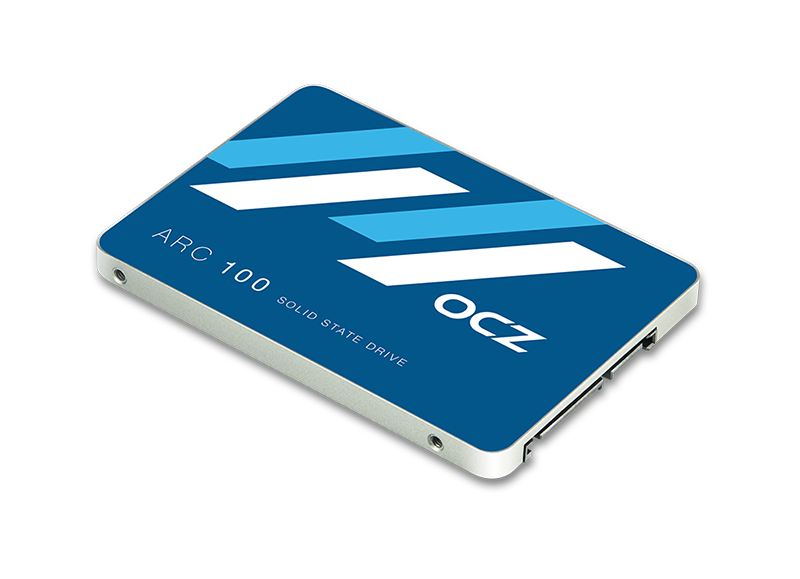

From the packaging to the silicon - What you get
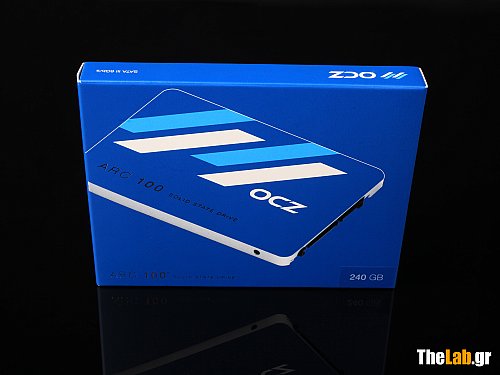
|
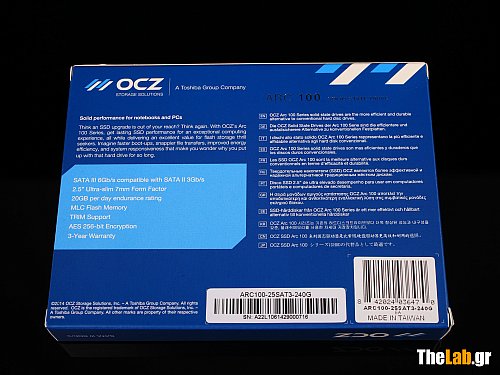
|
As you can see in the photos, the OCZ ARC 100 comes in a classic paper package in blue and white which will be a great hit in Paris this year. On the lower right of the front of the package there is a sticker indicating the capacity of the SSD, in our case 240GB. Incidentally, the OCZ ARC 100 comes in 120, 240 and 480 GB varieties.
On the back, in the light blue box we can see some of the features of the tested SSD, which we will go into later, but for now lets keep that the product is SATA III, has a 7mm height to fit into ultrabooks, supports TRIM and is covered by a three year warranty. On the right we see in 12 languages the attempt of OCZ to convince us that SSDs are better than conventional Hard Disk Drives.
Inside the paper packaging we find the SSD in transparent plastic which in combination with the packaging seems able to protect it from normal mishaps during transport. Included is an installation manual with many pages detailing in many languages the installation procedure of the SSD and the warranty terms for which -stay with us - we have some very interesting things to tell you. Other accessories such as a 3,5" adapter or some software, shine by absence. That is not necessarily bad, as long as it is mirrored in the price.
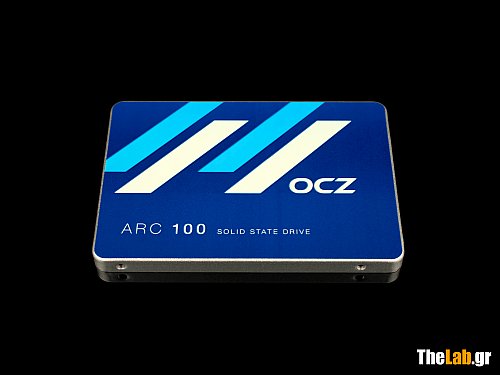
|
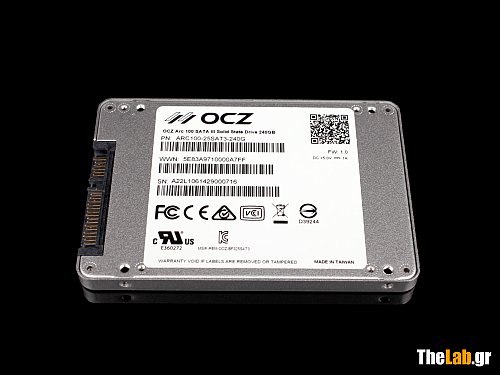
|
At last, the product itself, whose upper surface is covered in a full body sticker in the colors of the packaging, while the lower surface sports a white sticker with information such as the model, product number, serial number, certifications, country of origin (Taiwan), Firmware with which the SSD comes from the factory and voltage as well as current of operation.
Did you notice anything strange? Yes, the classic sticker that covers some screw and voids the warranty if removed is missing. As a matter of fact, even if it was there, which screw would it cover? Can you even get inside this SSD?
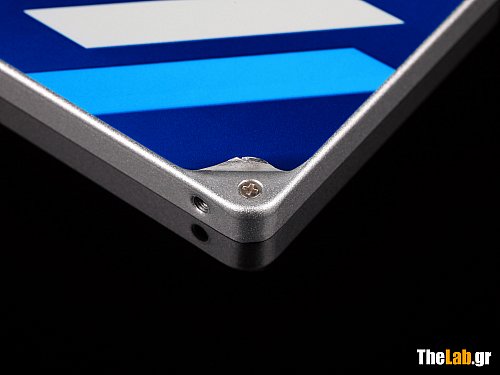
|
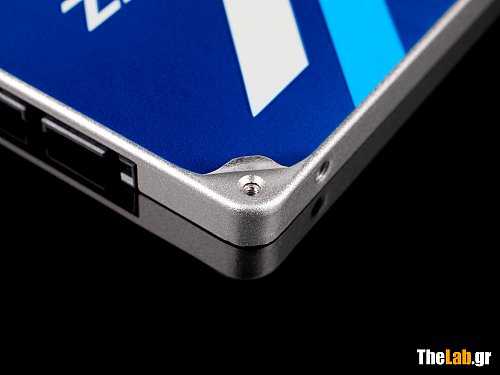
|
There are the screws! One on each corner of the upper surface, under the big sticker. OCZ decided to avoid defacing the ARC 100 with special warranty stickers and visible screws and hid them under the big sticker of the upper surface. In any case the Warranty terms warn not to mess with the sticker to get access to the screws, as that will void your warranty.
So be it, for you we lifted the sticker carefully and unscrewed the four screws that open the casing of the ARC 100. Then we unscrewed another four that fix the pcb to the lower metal cover and...
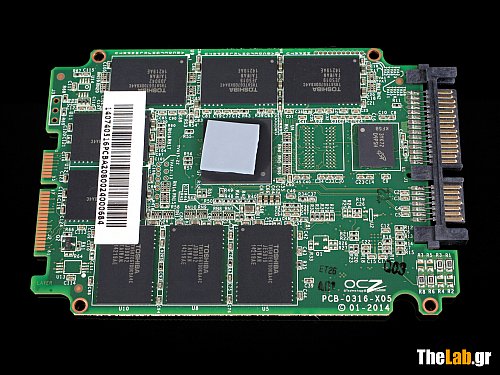
|
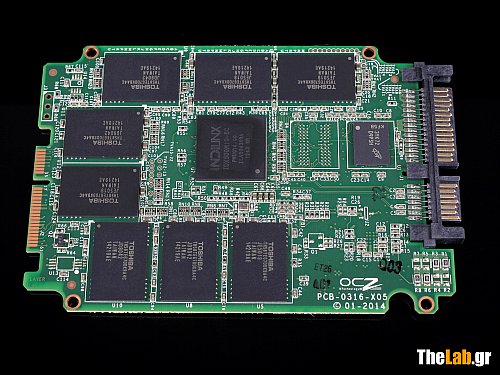
|
...here it is, almost naked covering only the essentials on the left while on the right we uncovered even that. We are talking about the thermal pad that covers the controller of the ARC 100 and brings it into contact with the metal casing to disperse the heat it produces. There is also a sticker with a code number on some two of the NANDs which gives the impression that it concerns the batch of the NANDs used on the drive. Gone!
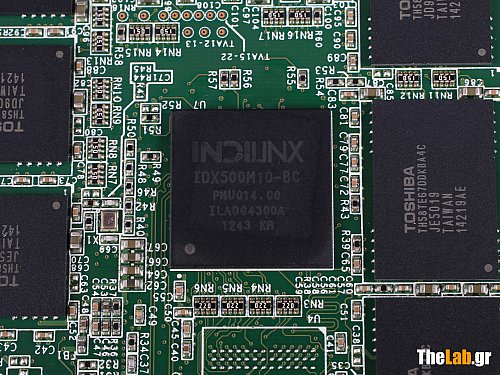
|
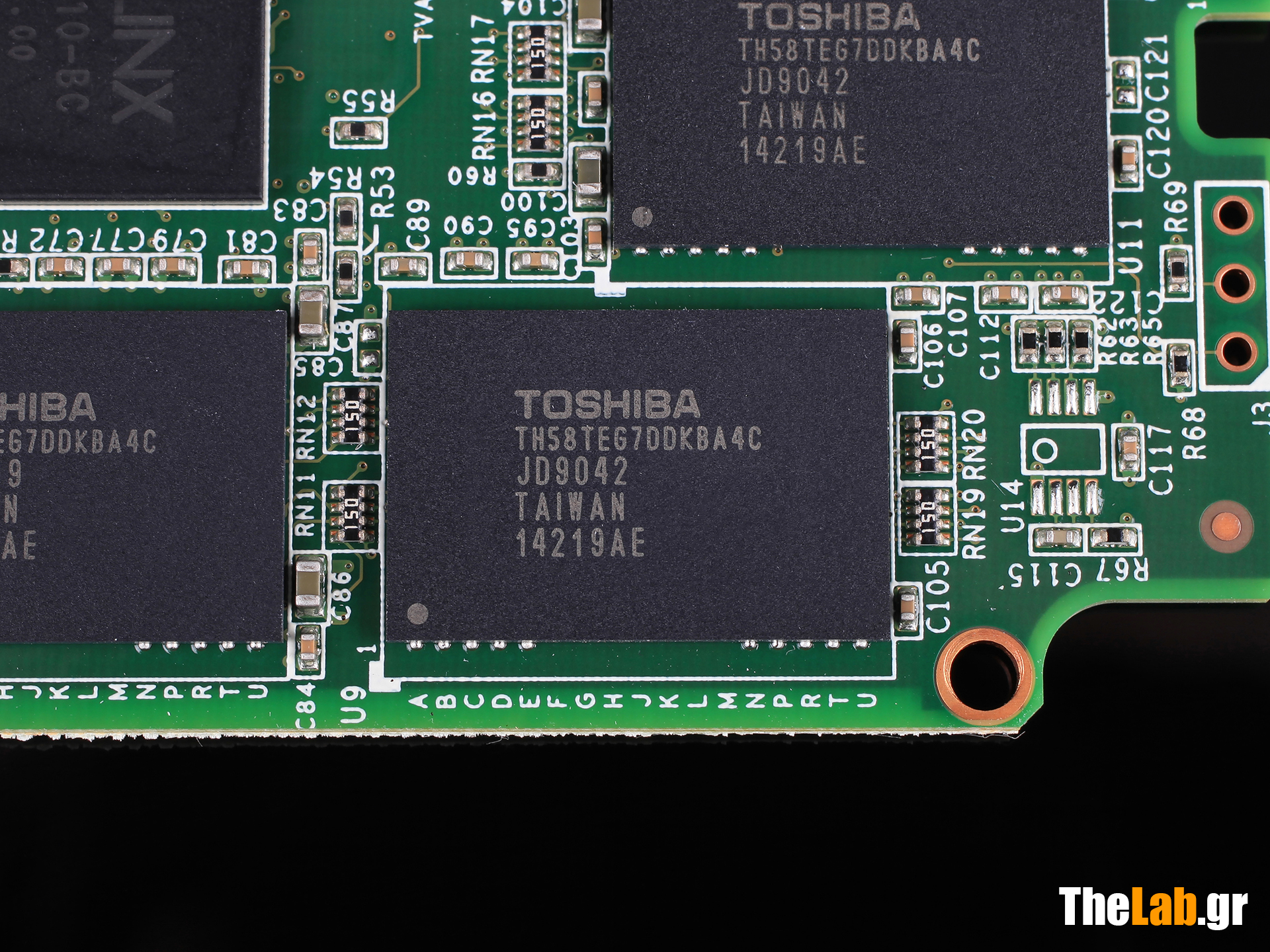
|
Here we see a close-up of the controller of the ARC 100 which is none other than the known Indilinx Barefoot 3 M10 with the code IDX500M10-BC, clocked at 352MHz. It is exactly the same controller we find inside the Vector 150, the flagship of OCZ, but there it is clocked higher, at 397MHz.
In the picture of the right, we have one of the totally 16 NAND chips on the ARC 100. They are made by Toshiba and have a capacity of 16GB each, bringing up the total capacity of the ARC 100 to 256GB. As the SSD only offers 240 of them to the user, we must assume that the remaining 16GB are used for overprovisioning. The NAND chips used in the ARC 100 are the latest 64Gbit A19nm synchronous MLC NAND by Toshiba and are coded TH58TEG7DDKBA4C. Theoretically they will be a bit slower than the ones used in the Vector and Vertex models due to the smaller lithography, but they will also be cheaper.
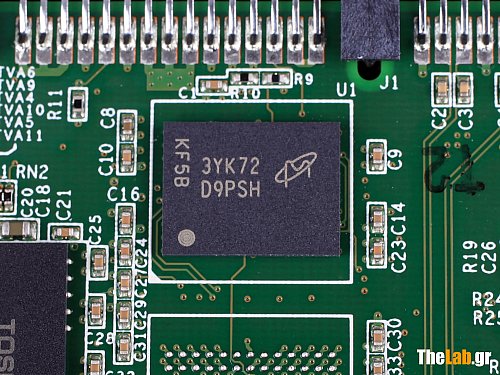
|

|
On each side of the PCB there is a chip by Micron which provides the cache memory for the controller of the SSD. Specifically they are 2 chips coded D9PSH, 256MB each, which give a total of 512MB of cache to the Indilinx M10. The rest of their specifications are that they are DDR3 chips clocked at 800 MHz (DDR3 data rate = 1600Mhz) and CL=11. For more information you can visit Micron's web page.
In the picture on the right you can see the other side of the PCB which includes eight NAND chips, 1 cache chip and on the lower left, the power circuit of the drive.

|
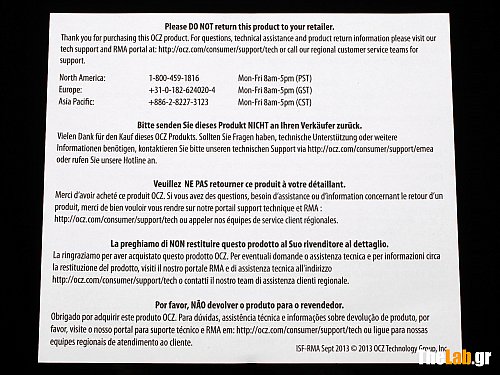
|
Here is the power circuit with its coils and its capacitors and in the middle the chip coded TPS652510 by Texas Instruments which includes three 3 DC-DC converters and the requiredpower MOSFETs, while it can handle input of 4,5 up to 16V. For more information about it, you can visit Texas Instruments' web page.
In the last picture we see a piece of paper which is included in the package to warn the buyers to not return the product to their retailer but to contact OCZ directly in case of a problem. This is done in 11 languages, 5 on this side and 6 on the other. But why?
At this point we will go back to the warranty, as we promised. OCZ, starting with the ARC 100, is launching a new kind of warranty in the SSD market which promises to make users' lives easier. According to this new warranty which OCZ calls ShieldPlus, you no longer need any proof of purchase for the RMA procedure as the serial number of the product is enough. But this is not even the best part. In case of the product malfunctioning and after you contact OCZ and start the RMA procedure, a new SSD is forwarded to the consumer by the company. After the consumer receives the new drive he sends the malfunctioning one back to the company at OCZ's expense. This warranty is valid for all of Europe and so far only covers the ARC 100.
All we can say is a big well done to OCZ for the warranty of the ARC 100 and that we wish other companies will follow the same path. We cannot but think that such a warranty must come from the great confidence OCZ has about the quality of its product.
Specifications - What is this thing capable of?

In this table we can see the theoretical performance of the ARC 100 at its various capacities. We notice small differences in reading speed and somewhat larger in writing speed. Max IOPS are common to all capacities while max IOPS at steady state are dependent on capacity and are 12000 IOPS for the 120GB model, 18000 IOPS for the 240GB model and 20000 IOPS for the 480GB model. We cannot say we are impressed by the numbers, except for the steady state ones which are exceptional and far superior than the competition's.

Here we can see the physical characteristics and parts of the ARC 100, which we saw in detail in the previous page. Its exact dimensions are also provided.

In this table we see the reliability features of the ARC 100. And first of all the encryption features which are 256-bit AES-compliant and support only ATA passwords while the industry is turning to the safer and easier to use TCG Opal encryption. Be that as it may, desktop users will be fine with it.
Continuing down the table, we see the ECC error correction of the ARC 100, the support of S.M.A.R.T. and the fact that the ARC 100 is made for 20GB of writes per day for 3 years.

Here we see the power consumption of the ARC 100 and the high tolerances it has to environmental factors, as all SSDs do.
It is noteworthy that the ARC 100 sadly does not feature low power states (slumber and DevSleep), so its power consumption in idle state is comparatively higher than the competition.

In the last table we see the comparative features of the ARC 100 and its main competitors. While it does not win any prizes in sequential reads and writes, it features the highest steady state IOPS and a very high MTBF.
Software - Spartan but functional
The OCZ ARC 100 does not include in its package any software but you can go to and download the OCZ Toolbox.
The software has all the basic functions one needs to perform on an SSD. We display and explain its functions below.
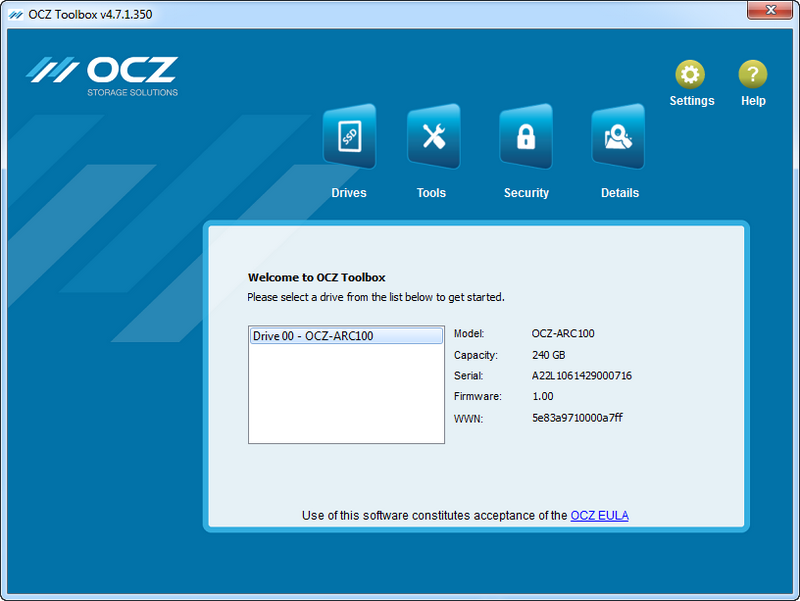
Running the software opens the screen above and in the white box it shows you all the OCZ SSDs in your system. In our case, the OCZ ARC 100. Choosing any of them from the list we see at its right the exact model, the capacity, the serial number, the firmware and the WWN (World Wide Name).
We must note that if no drive by OCZ is found in the system so you can choose it on the list, the rest of the tabs in the program will not open. So, having chosen one drive and pressing Tools, you get the following window...
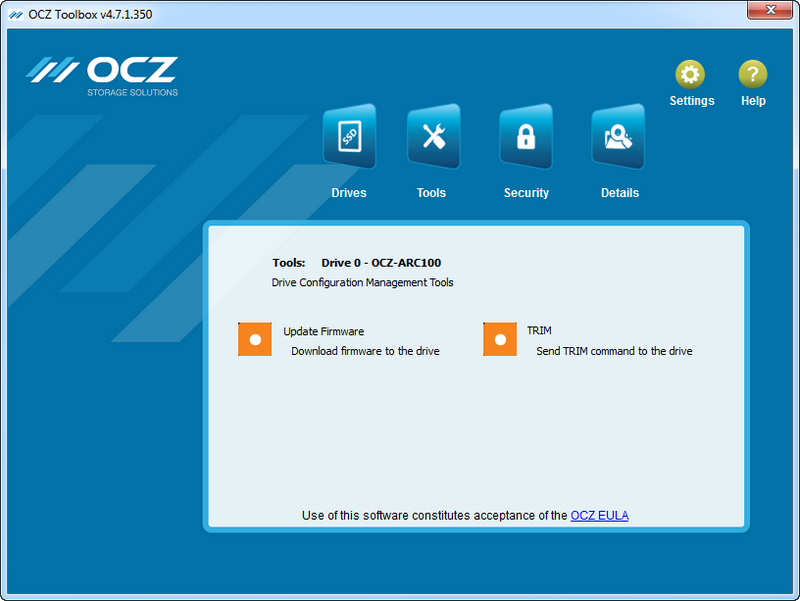
...in which you can download a new firmware, if there is one, and upload it to the drive or send a manual TRIM command.
The third tab is about security...
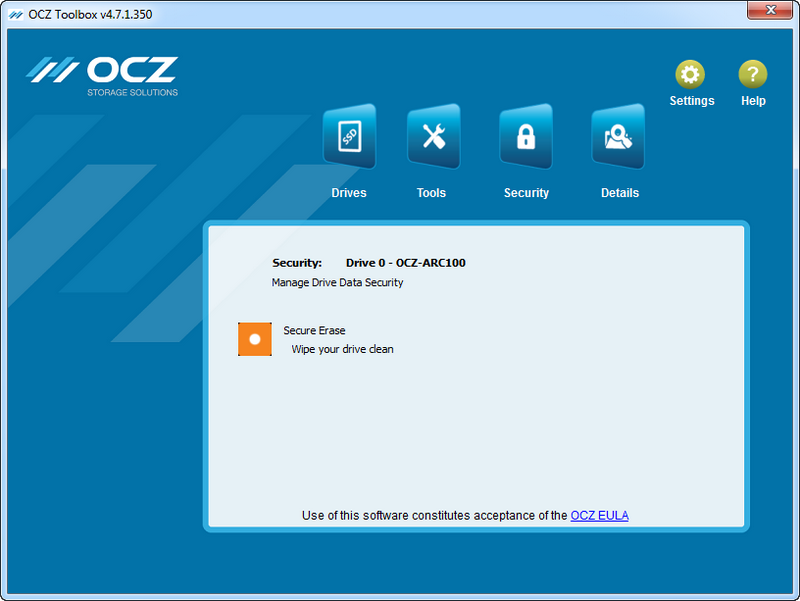
...where we can secure erase our drive and return it to factory state, for security reasons so that one is not able to recover our data (or so they would have us think) but also to return the SSD to a clean state, where all NAND cells are clean and ready to write data. This procedure, contrary to what one might thing, is completed rather fast.
The last tab is the Details tab...
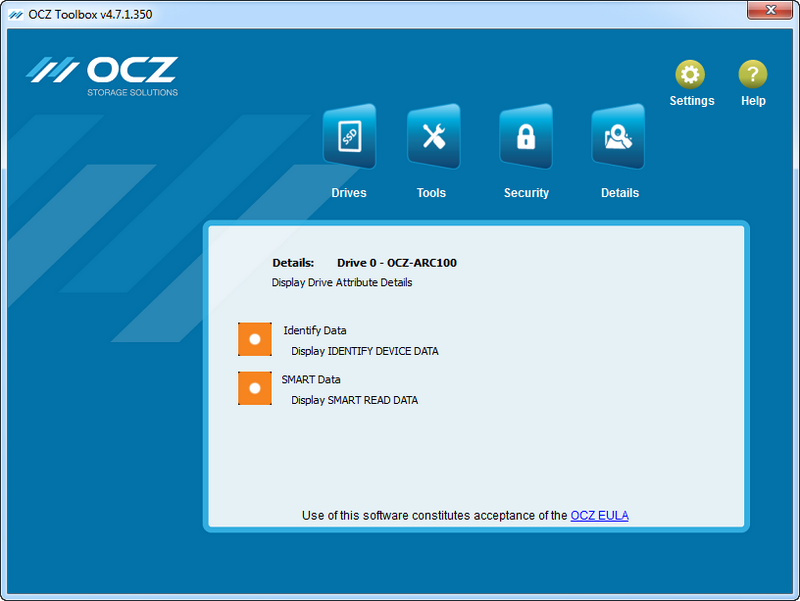
...where you can get details about your SSD and its S.M.A.R.T. status.
Choosing the security button on the top...
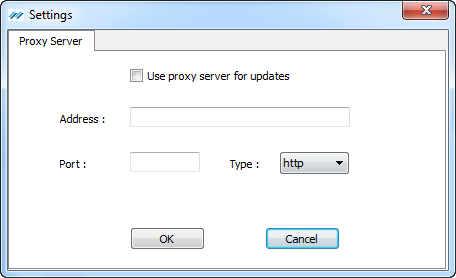
...just gives the option to perform the firmware downloads through a proxy serves and help...
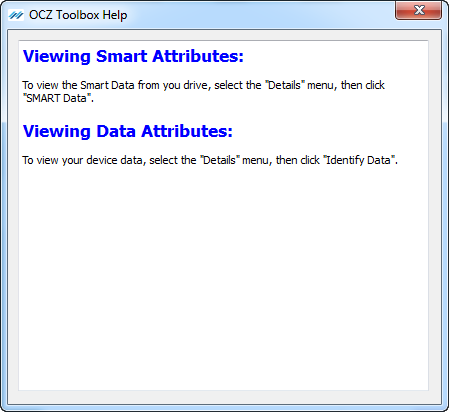
...guess what, yes!, gives information about our choices in the program.
On the whole we can say that OCZ's software, although unimpressive, performs all the basic functions it should, while the only missing thing we would like would be to include a guide to improving the settings of windows to run on an SSD drive.
Our test system and methodology - Let's see, what are we using and how?
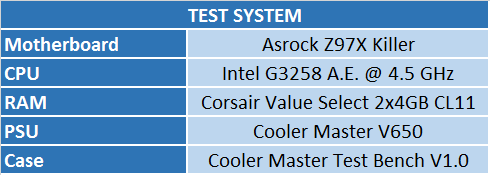
Our test system is based on the Asrock Z97X Killer. This particular motherboard sports SATA III, SATA Express and Μ.2. interfaces making it able to support all SSDs in the market, currently and in the near future. Thus it provides the means to make direct comparisons on the same system.
The CPU is the Intel G3258 Anniversary Edition, with unlocked multiplier which allowed us to easily overclock it to 4,5 GHz. Keeping in mind that the SSD test with high IOPS require hick clocks but run on only one thread, this particular CPU is perfect for our tests.
The RAM is at 8GB which more than covers our needs for the tests, The PSU is the V650 by Cooler Master and the system is housed by the Cooler Master Test Bench V1.0.
Our warmest thanks to Asrock and Cooler Master for the parts they provided for the construction of our test system!
The operating system on which we run our tests is Windows 7 64bit and it includes, aside of all the drivers, the basic programs that come with the motherboard so we can achieve a more realistic and close to fact test environment. The driver of the SATA controller used was the Intel 13.10.1058, obviously in AHCI mode.
The tests which the OCZ ARC 100 will undergo are divided into 4 categories:
1: Synthetic benchmarks on an empty drive, where the tested SSD is a secondary drive to the test system, empty and relaxed. These are the perfect conditions you will never see in real usage.
2: Synthetic benchmarks on a system drive, where the operating system is installed in the tested SSD. Here things come a little closer to reality, but synthetic benchmarks are still synthetic.
3: Steady State Benchmarks where we measure the performance of the SSD while it writes random data for a prolonged period of time so it reaches its worst possible performance. Here things are the opposite of before and thus very unfavorable and unlikely to appear during the usual home usage. But they are the rule in database and file servers.
4: Real Life Tests! Here, using the special suite created for us by the programmer Stelios Sifakis (whom we thank!), we perform some of the most usual tasks and time them. In these tests we place the most gravity for the score as they show the real experience a user will have.
The SSDs included in our comparison are the very well known in this category Samsung 840 EVO 250GB, the Kingston SSDNow KC300 240GB and of course our leading actor the OCZ ARC 100 240GB.
Stay tuned. After the tests there is commentary and score!
Synthetic Benchmarks in an empty drive - We start easy
The HD Tune Pro 5.50 measures the reading and writing speed in unpartitioned SSDs. Lets see how the OCZ ARC 100 fares beside two of its competitors:
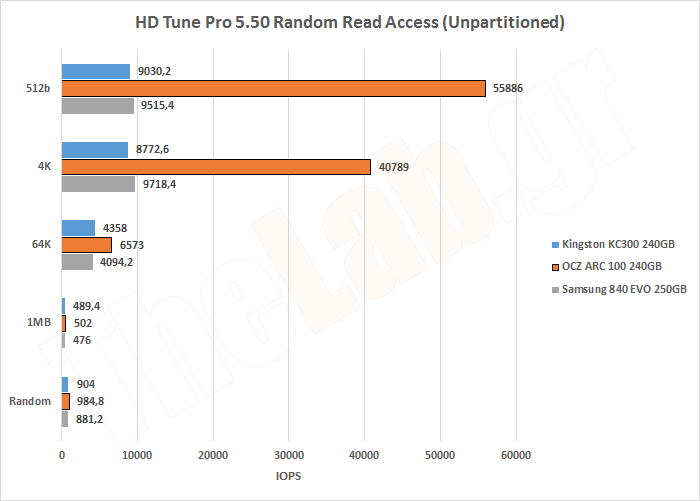
In the reading test of the HD Tune Pro 5.50 the OCZ ARC 100 is by far the fastest, especially in the 512B 4ΚΒ reads, and starts the testing on the right foot...
...while in the write test, despite keeping its high performance, the competition rises and things seem more balanced, wit the OCZ ARC 100 keeping the lead in the 4K writes.
We continue with the Average Access tests of AIDA 64 4.50. With the AIDA 64 Average Read Access and Average Write Access, executed in a drive without partitions we see the responce time of the SSD to various requests. In other words, we measure its latency. Here, lower is better.
In the Average Read Access test, the OCZ ARC 100 ties with the Samsung 840 EVO while the Kingston SSDNow KC300 shows a significantly higher latency.
In the Average Write Test, the OCZ ARC 100 sweeps the floor with only 0,03ms of average latency. The 0,11ms of max latency we see are due to only 1-2 spikes during the test.
Following is the AS SSD Benchmark, version 1.7.4739.38088.
In the read test the OCZ ARC 100 is somewhere in the middle surpassing the Samsung 840 EVO only in the 4K64Thrd reads.
In the write tests it fares even better, winning in the 4K writes also and lagging behind only in the not so important sequential writes.
In the copy tests the Samsung 840 EVO is the undisputable winner with the OCZ ARC 100 marginally beating the Kingston SSDNow KC300.
Following are the tests of the CrystalDiskMark 3.03b x64.
In the read tests of CrystalDiskMark the OCZ ARC 100 does not do well and lags behind its two competitors.
The write tests are a different story where it sweeps the competition and only loses at the sequential writes which are the least important.
Moving on to the score from the Anvils Storage Utilities 1.1.0...
...where the OCZ ARK 100 finishes in the middle. with the Samsung 840 EVO in the lead and the Kingston SSDNow KC300 bringing up the rear.
WE now come to the suites of Futuremark whom we older guys remember as MadOnion. These suites try to simulate real working conditions. Lets start with the PCMark 05.
Here the OCZ ARC 100 does not fare well at all, finishing almost always last, while the Kingston SSDNow KC300 was the king of the test.
Going on to the more contemporary PCMark7.
In this test, excluding the "Starting Apps" category where the Kingston SSDNow KC300 shines and the OCZ ARC 100 does not fare well, all 3 SSD were very close.
And we conclude this series of tests with the most recent PCMark8, where the results are in seconds and lower is better.
Here we see a slight predominance of the Samsung 840 EVO but generally and excluding the weakness of the Kingston SSDNow KC300 in the Photoshop tests, the differences are marginal.
Thus, we conclude the synthetic benchmarks on an empty drive with the impressions the ARC 100 left us being on the positive side. Despite the fact the the synthetic benchmarks are not its strong point, the ARC 100 leaded the scores in many tests and where it lagged behind it was not by much.
Synthetic Benchmarks on a system drive - Things are getting interesting
We are making things a little harder now, running the same benchmarks but this time the operating system is installed on the SSD tested.
Once again we start with the HDTune Pro 5.50 but this time obviously on a partitioned drive and we only run the read test as the write test is destructive and would have erased all data on the drive.
With the operating system on the drive the situation in HD Tune Pro 5.50 changes drastically with the Samsung 840 EVO dominating and the OCZ ARC 100 lagging behind while the Kingston SSDNow KC300 shows a very low performance.
We continue with the Random Read Access of AIDA64 4.50, on a partitioned drive now. The Random Write Access, being destructive, is omitted.
Here the OCZ ARC 100 ties with the Samsung 840 EVO while its higher max latency is due to only one spike during tested and considered unimportant.
Going on to the AS SSD Benchmark version 1.7.4739.38088.
In the read tests the field is similar to the empty drive tests with only difference the rise of the Samsung 840 EVO in the 4K64Thrd test. Thus, the OCZ ARC 100 lags behind the Samsung 840 EVO in this test.
In the write tests we also get similar results to the empty drive tests with the OCZ ARC 100 lagging behind in the sequential writes but storming the 4K64Thrd writes test.
Finally, in the copy tests the Samsung 840 EVO leads the ISO copy test but the OCZ ARC 100 wins the other two, taking the victory of this test at the points.
Following are the tests of the CrystalDiskMark 3.03b x64.
The reading tests remain similar to the ones on the empty drives with only difference the significant fall of the OCZ ARC 100 and Kingston SSDNow KC300 performance in the 4KQD32 test. The Samsung 840 EVO in the indisputable winner of the test.
In the write tests the OCZ ARC 100 keeps the lead in the 512Κ test, ties the Samsung 840 EVO in the 4Κ and loses by a great margin in the 4KQD32 test. The Kingston SSDNow KC300 comes last in all the tests.
Continuing with the Anvils Storage Utilities 1.1.0...
...where the results were similar to the ones of the empty drives. The OCZ ARC 100 lags behind the Samsung 840 EVO and leads the Kingston SSDNow KC300.
Following are the tests of Futuremark. In all the tests of PCMark05, PCMark7 and PCMark8 the results are similar to the ones on the empty drives. If you don't believe us, here they are:
And we finish with BootTimer which measures the time from the loading of the windows kernel until the desktop is usable.
Here best is the SSD which achieves the lowest time with the OCZ ARC 100 winning marginally over the Kingston SSDNow KC300 and by quite a bit more the Samsung 840 EVO.
This concludes the synthetic benchmarks on a system drive. The OCZ ARC 100 lost some ground in some of the tests but remained generally high. As a total impression we would place it a little below the Samsung 840 EVO and quite a bit above the Kingston SSDNow KC300.
Let's hit the tough road!
IOMeter - We press it, can it take it?
The next test is purely sadistic. We make the poor SSD write random 4K packages for 12 hours straight without resting and measure its IOPS every five minutes. After some time and as the garbage collection and trim features do not have time to work, the SSD reaches a steady state where every write has to preceded by a deletion of the NAND cell and the SSD operates at its worst performance.
This case is very unlikely to occur in light, casual usage but it is the norm in database and file servers. You should consider the following results according to the heaviness of your workload .
OCZ takes pride in the performance of its SSDs in this particular test, both of its higher models and, as we can see here, the ARC 100 that sweeps the floor with its competition. Any comparison is unnecessary.
Following is the mixed workload test. SSDs in a system rarely do 100% reads or 100%% writes like in the synthetic benchmarks. In the following test we start with three five-minute tests of 100% random reads and keep the average. We continue with three five-minute tests of 95% random reads and 5% random writes and keep the average and so forth as indicated in the graph until we get to 100% random writes. Note that this particular test is run on a drive that has already reached steady state and tries to simulate heavy multitasking.
As expected, the OCZ ARC 100 storms this test as well. Once we get past the 100% random read test where the Samsung 840 EVO has the best performance and include even a few writes, the Samsung 840 EVO plummets while the ARC 100 flies. The Kingston SSDNow KC300 has a very respectable performance.
Finishing these very hard tests, where the OCZ ARC 100 shows its teeth, we have to stress that it is a very rare occasion to find such extreme conditions in normal everyday use. Their value is to show us the other side of the synthetic benchmark coin and let us try to find the truth somewhere in the middle.
But instead of guessing we have a better suggestion. The suite of Real World Tests is coming to clear the field, with true tasks in windows and exact timing.
Real Life Tests - How is it in real life?
We start with the windows startup time test. One might ask, didn't we already do that with BootTimer? As we said, BootTimer measures the time from the loading of the windows kernel until the desktop is usable. But windows itself records in the event viewer the total time of the windows start up, until all services are loaded. As reason indicates, this time is significantly longer and in particular...
...the Kingston SSDNow KC300 takes the lead with more than a second's difference, while the OZC ARC 100 is just a tenth of a second faster than the last Samsung 840 EVO.
We continue with real file copying.
We copy 32000 4K files, 500 MP3s, 1000 21MP JPGs, a 7,52GB ISO 7.52GB and a 10GB High Definition MKV movie. The respective times are shown in the diagram above with the OCZ ARC 100 winning by far the copy tests of the two large files.
Next, we will store a folder containing the setup of the Office 2013 in a rar file (using the "store" setting)...
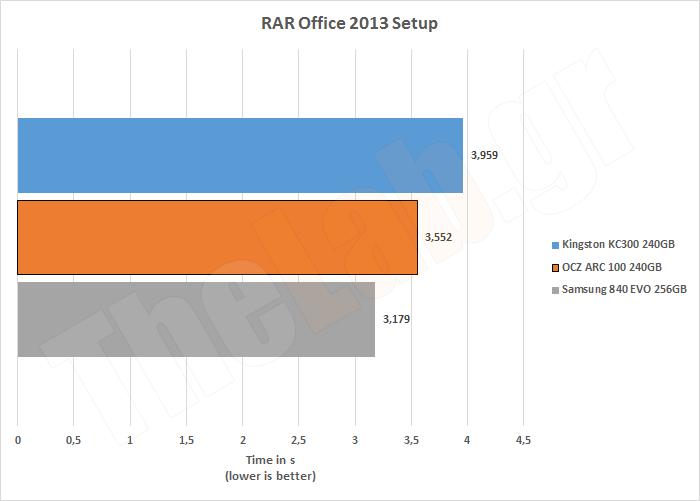
... and then we will decompress a - compressed - rar containing the setup folder of Office 2013.
Here the best times are made by the Samsung 840 EVO with the OCZ ARC 100 following close and the Kingston SSDNow KC300 slightly behind.
We continue with a virus scan of the system32 folder of windows using the Avira Antivirus, where...
...the Kingston SSDNow KC300 wins by a third of a second the Samsung 840 EVO while the OCZ ARC 100 lags behind be quite some time. Obviously virus scanning with Avira is not its strong point.
Next we will open a 324MP TIF file with Photoshop CS6 save it as BMP and close Photoshop.
All SSDs fare the same here with the OCZ ARC 100 taking a little more time to open Photoshop.
Then we open Word 2013, load a huge DOCX with images links etc, save it as DOC and close Word.
Here the OCZ ARC 100, despite the slight delay in reads, makes faster writes than the other SSDs achieving the best overall time, even if it is by a bit.
Next, we install MS Office 2013...
...were the best time by far is achieved by the Kingston SSDNow KC300 with the OCZ ARC 100 marginally losing to the Samsung 840 EVO.
Thus end the Real Life Tests. The last chart shows the total time of these tests where...
The OCZ ARC 100 has the better performance , owing largely to the great times it achieved in copying large files.
Conclusions and score - To the point
The hour of judgement is here. The OCZ ARC 100 is an SSD with personality. Where the competition shows its performance in outrageously favorable conditions, the OCZ ARC 100 shows what it can do in outrageously unfavorable ones. Should that mean something to us? Of course it should!
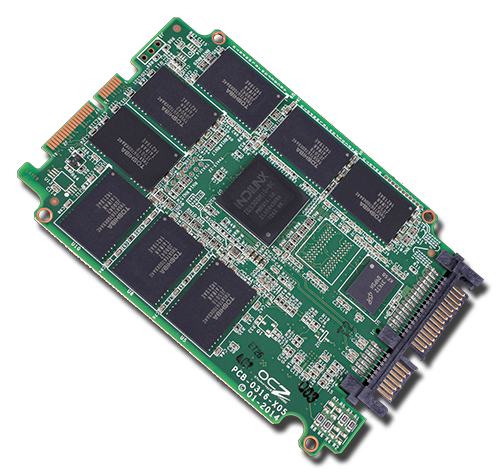
Out of the box, all SSDs are fast! Many are faster than the OCZ ARC 100. But with usage and the heavier the more so, performance drops and sometimes it does so way too much. There the OCZ ARC 100 differs, sporting the best performance in its category.
Is it worth it to invest your money on the OCZ ARC 100? The answer is, it depends. For light users who never stress their drives, another SSD with higher performance under favorable conditions and a lower price might be better. For users with heavy multitasking and frequent writes that stress the SSD, the OCZ ARC 100 is the only way to go in the mainstream category. For most users who are somewhere in the middle, let each decide where to put the weight in choosing their SSD.
Of course, we have to take into consideration that the OCZ ARC 100 comes with the best warranty in terms of conditions we have ever seen, not only on an SSD but on any product!
And so we get to the score:
a) In Features, we take away a few points because the OCZ ARC 100 does not have low power states (slumber and DevSleep) and just a tad more for the missing TCG Opal encryption.
![]() In Price the official price in Germany is 110,50 euro, including 19% V.A.T. which is quite competitive for what the drive offers
In Price the official price in Germany is 110,50 euro, including 19% V.A.T. which is quite competitive for what the drive offers
c) Usability does not have any real significance in SSDs. They all now have a 7mm height which allows for installation everywhere from a desktop to an ultrabook and, let's face it, their installation has a worst case scenario of screwing four screws. For these reasons, the Usability category will not be taken into account in the SSD Scores.
d) In the Performance department, we have a lot to discuss. It depends how one would like to approach the subject. In the synthetic benchmarks the OCZ ARC 100 did not shine but we would say it faired about average. Considering that synthetic benchmarks are a long throw from real usage, they make a very small part of the overall score. On the contrary in Real Life Tests the OCZ ARC 100 finished first, outstripping 2 strong competitors. Moreover, in our sadistic tests, it scored excellent showing that it is capable of maintaining its high performance over time no matter how hard you treat it. For all of the above, its performance score will be quite high.
Advantages
- Exceptional performance in the steady state test.
- Exceptional performance in the mixed workload test.
- Steady performance over time.
- Good performance in the Real Life Tests.
- The best warranty we have ever seen.
- Spartan but complete software.
- Multi-language installation manual.
Disadvantages
- Mediocre scores in synthetic benchmarks.
- Absence of a 3,5" adapter.
- Absence of migration software.
- Absence of a windows optimization tab in the OCZ Toolbox.
Based on the above, the total score of the OCZ ARC 100 is:
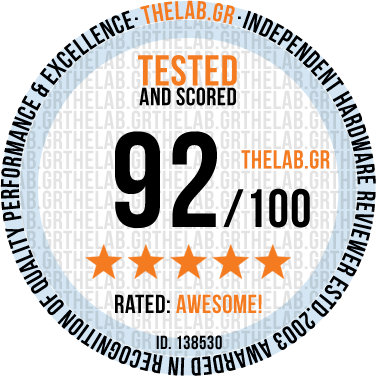
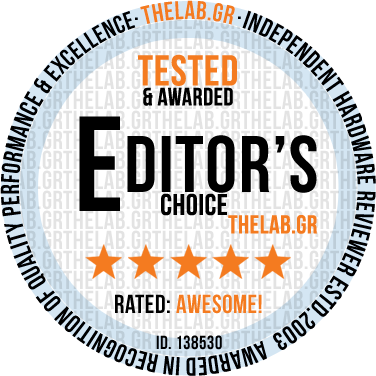
We thank OCZ warmly for providing the test sample

For TheLab.gr Polymeros Achaniotis 1/9/2014


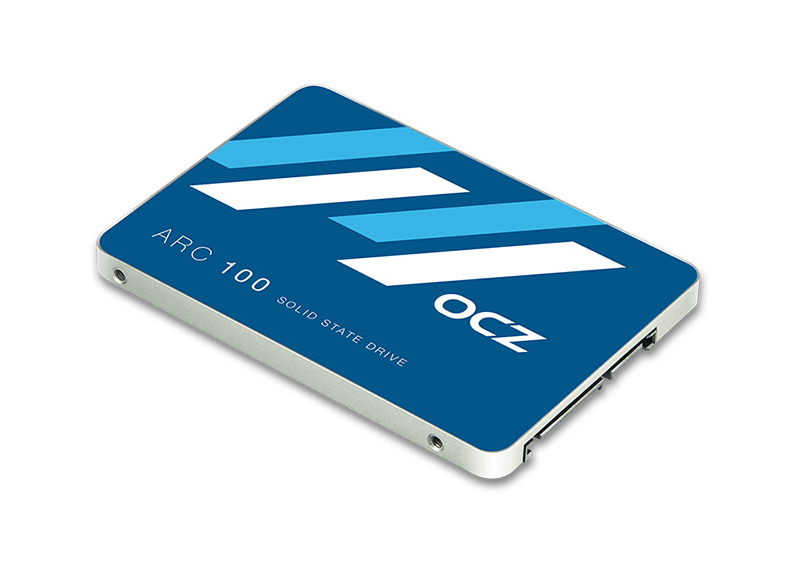

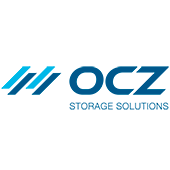
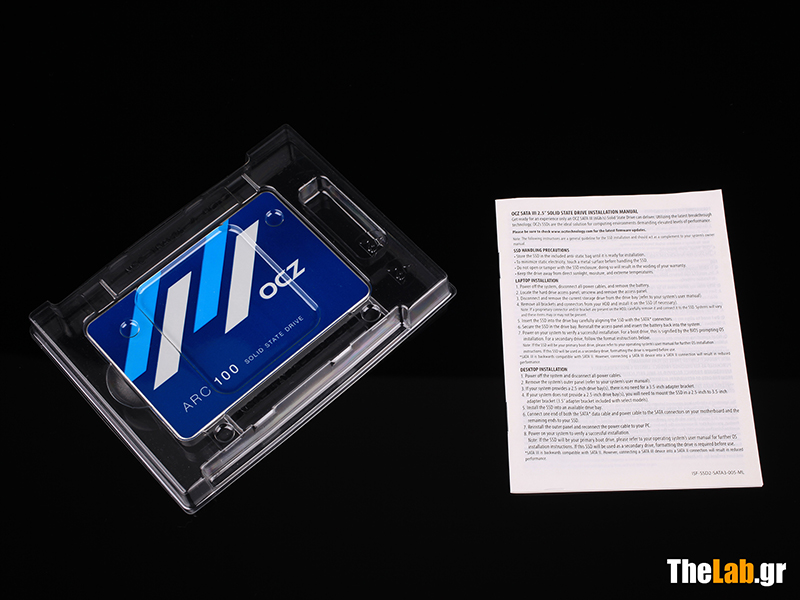
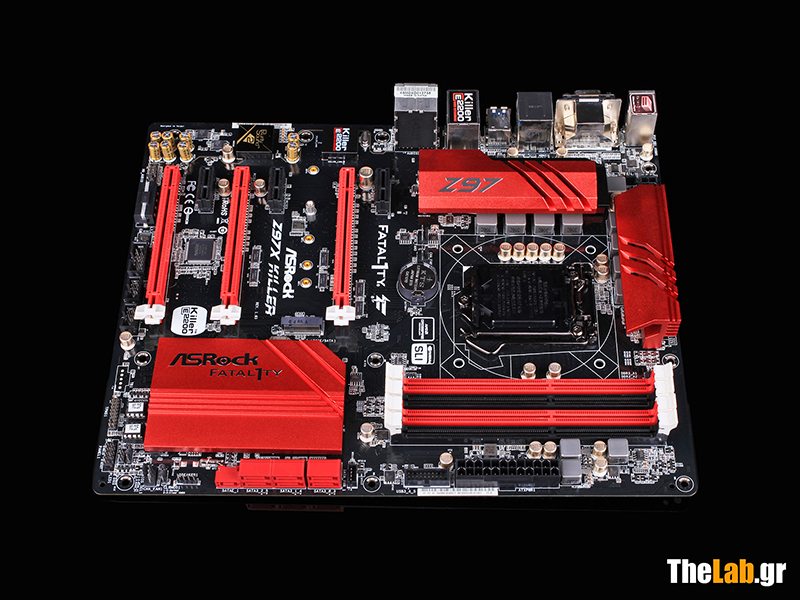



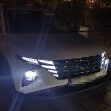

Recommended Comments
There are no comments to display.
Create an account or sign in to comment
You need to be a member in order to leave a comment
Create an account
Sign up for a new account in our community. It's easy!
Register a new accountSign in
Already have an account? Sign in here.
Sign In Now